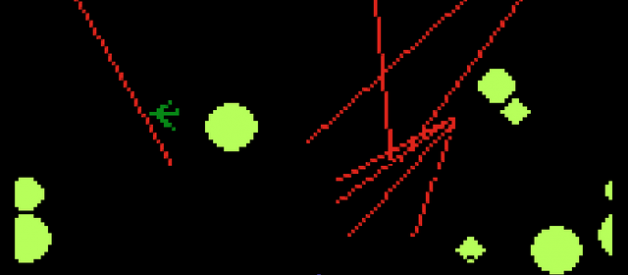Some time ago I wrote this article about Sega?s classic lineup of Super Scaler technology games, which utilized the ability to scale sprites in order to create the illusion of 3D environments. Also this one about early polygonal arcade titles.
But what would you say if I told you that real 3D rail shooter similar to Star Fox existed in the arcades back in 1983? That?s right, 83, not 93. Ten years before Star Fox hit the scene, there was Star Wars Arcade, which accomplished its 3D visuals using unfilled vector objects, also sometimes known as wireframe:
As you can see, there are polygons (consisting of connected vectors) but they are not filled. Not textured of course but also not even flat shaded. Like Red Alarm for the Virtual Boy they are just bare, hollow vector shapes.
What made vector games special, besides the ability to display 3D shapes long before you?d expect was possible, is that they were displayed on vector monitors. These monitors are not subdivided into pixels like a normal television screen. The surface which the electron gun draws vectors to is just one big layer of phosphor which emits light wherever excited by electron impact.
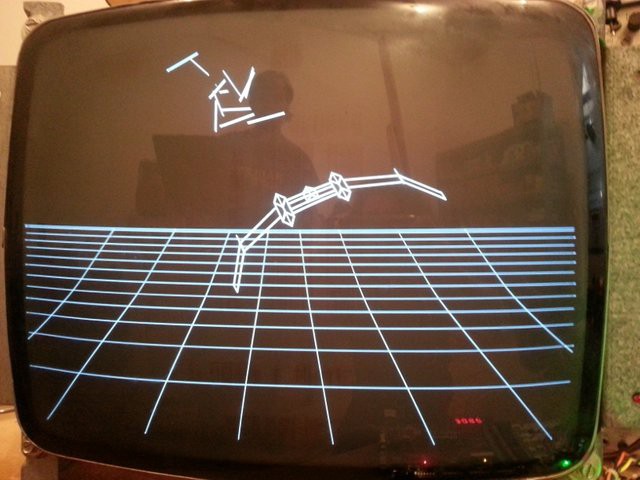 source
source
You?ve seen monitors like this in oscilloscopes, in heartrate monitors in hospitals, and in the Vectrex home vector based game system. The advantage at the time was the ability to display clean, sharp lines and shapes in an era when traditional raster based 2D graphics looked like this:
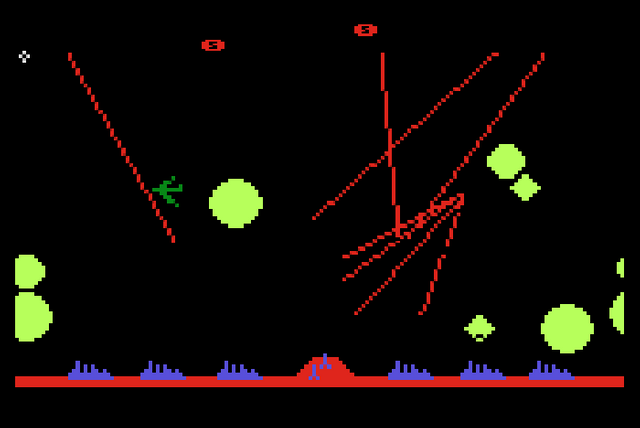 source
source
?So it should be clear why many preferred the crisp, well defined visuals of vector based games during that period, as seen in classics like Tempest. To my knowledge, Tempest was the first color vector based arcade game.
Adding color was accomplished by including a three color filter like on any color television but still drawing shapes to the screen as vectors instead of filling the whole screen line by line, the way raster based videogames were displayed:
The addition of color kept vector graphics competitive much longer than they otherwise would?ve been, but the filter (which subdivided the screen into pixels) took away somewhat from the sharpness that vector games had offered previously. For this reason some purists still prefer the black and white vector games like Asteroids:
Of course you cannot get the full effect on your computer monitor, it must be seen in person. Certain ingame objects like the lasers shot by UFOs glow much more brightly than anything a computer monitor is able to display, it?s quite surprising when you first see it.
You can sort of see the effect in this photo of the Vectrex, a home gaming system based on vector graphics:
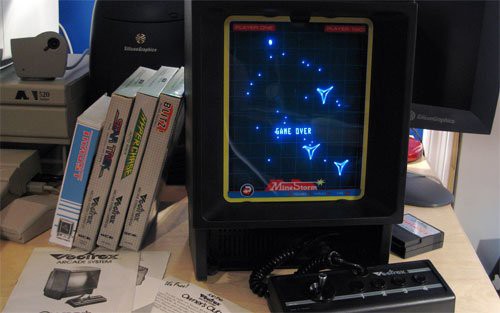 source
source
Vector graphics have an intensity not seen elsewhere. Sadly the Vectrex was short lived because it was built around a surplus of hospital heartrate monitors bought for a pittance. Once the supply ran out, it became uneconomical to build any more Vectrex units as it would?ve required buying the monitors at their standard brand new market cost.
Western Technology/Smith Engineering simply didn?t expect the Vectrex to be as popular and in demand as it turned out to be. They thought it would be a quick one-off project that would make them some money but quickly be forgotten. Instead it sold out, no more were produced and it remains a popular collector?s item today. How else are you going to play true vector games at home?
It even had a light pen for mspaint style applications, a pair of wired shutterglasses for stereoscopic 3D imaging and transparent multicolored overlays to somewhat alleviate the monotony of the monochromatic display.
I think that was the right choice in retrospect as the monochromatic vector displays give the sharpest, clearest visuals and are the most visually distinct from what you normally see on a television when playing videogames from this era. They also had to work around the monitors they had a cheap, temporary supply of and naturally, heartrate monitors aren?t in color as there would be no point.
It?s also a bit of interesting trivia that Ivan Sutherland?s ?Ultimate Display? from 1965, widely regarded as the first virtual reality display in history, utilized a pair of tiny vector monitors. That was the only way to display acceptable 3D wireframe objects at the time, without a degree of pixelation that would?ve made the resulting images unintelligible.
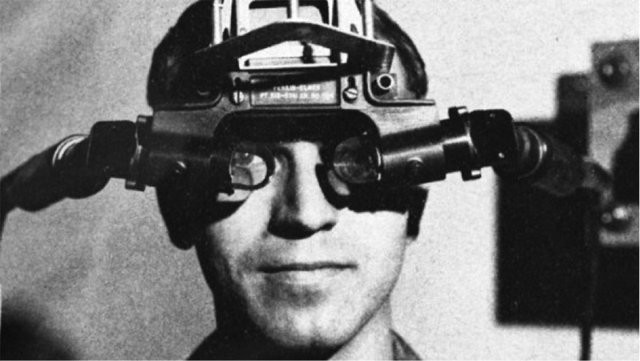 source
source
Remember that even 1990s VR headsets had abysmal resolution of less than 320*240 per eye. Using vector monitors instead meant no color, but effectively infinite resolution per eye as there were no pixels. This made it possible to produce clear, sharp 3D images in a VR headset circa 1965, long before most would imagine VR was even possible.
The very first videogames were vector based, in fact. ?Tennis for Two?, circa 1958 is regarded as the first true videogame and was played on an oscilloscope screen:
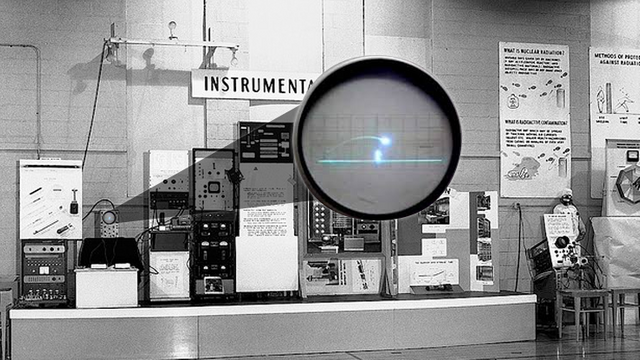 source
source
Isn?t that something? You?d expect the earliest games to be terribly low resolution. But in fact, they had infinite resolution. At least in that one respect, everything since then has been a step down.
Honorary mention to Battlezone, which famously was picked up by the US Military and developed into one of the earliest 3D military simulation programs:
Follow me for more like this! And why not read one of my stories?
